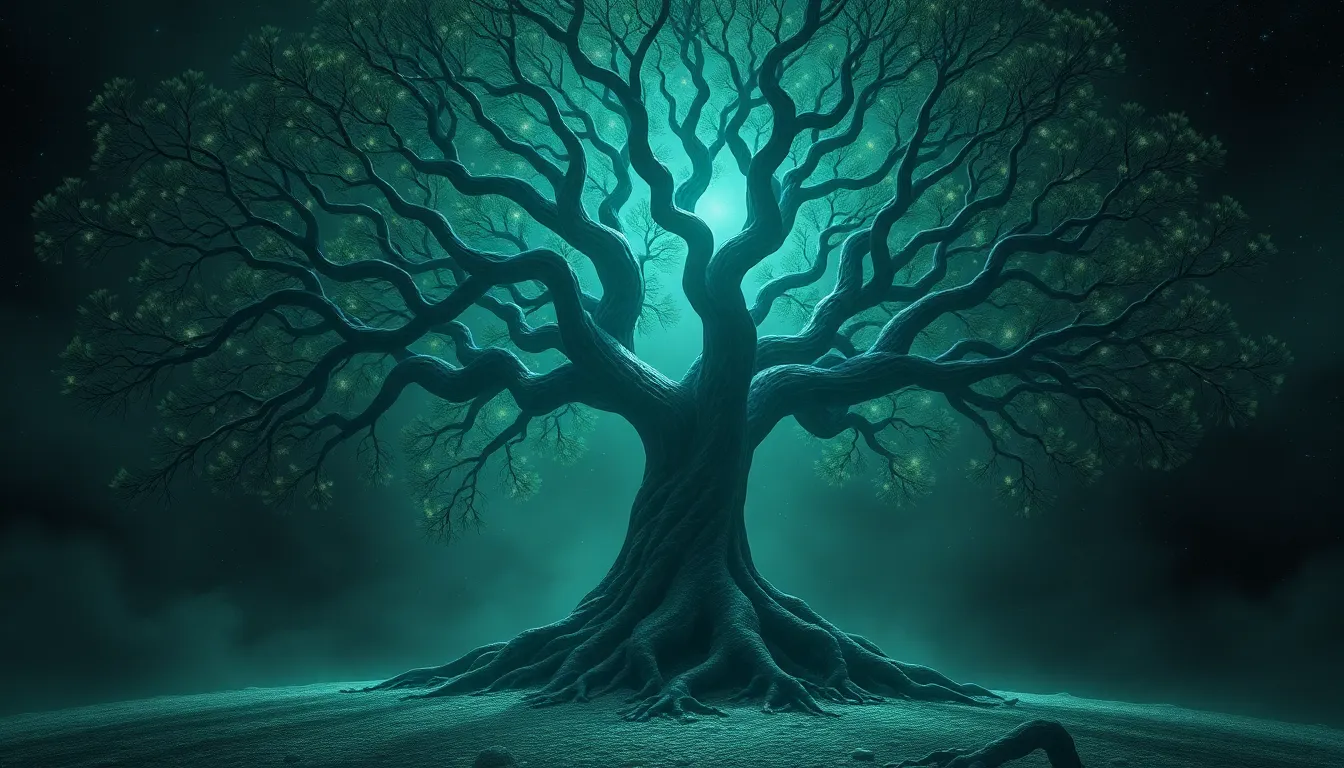The Tree of Souls: Myths of Connection and Ancestors
Introduction to the Tree of Souls
The Tree of Souls is a profound symbol found in various cultures, representing the interconnectedness of all living beings and their ancestors. This metaphorical tree serves as a reminder of our roots, linking us to those who came before us and the greater community we belong to. Throughout this article, we will explore the themes of connection, ancestry, and myth, illustrating how the Tree of Souls embodies these important concepts.
Cultural Interpretations of the Tree of Souls
Mythologies around the world feature interpretations of the Tree of Souls, illustrating the diverse ways cultures understand life, death, and connection. Here are a few notable examples:
- Native American Beliefs: Many Native American tribes view the Tree of Souls as a sacred entity that connects the living with the spirit world. It symbolizes the cycle of life and the importance of respecting nature.
- Celtic Traditions: In Celtic mythology, the Tree of Life represents interconnectedness and the wisdom of ancestors. The Celts believed that trees were portals to other realms, facilitating communication with the spirit world.
- Hindu Philosophy: The Ashvattha tree in Hinduism is often associated with the Tree of Souls. It symbolizes the eternal cycle of life and the connection between the physical and spiritual realms.
In these cultures, the symbolism of the tree often relates to growth, wisdom, and the cyclical nature of existence, serving as a powerful reminder of our place within the tapestry of life.
The Concept of Ancestral Connection
Understanding our ancestors’ role in shaping our identity and community is crucial in many cultures. The Tree of Souls serves as a metaphor for these familial and spiritual ties that bind generations together. Ancestral connections provide a sense of belonging, continuity, and identity, often manifesting in:
- Family stories and traditions passed down through generations.
- Rituals that honor and remember ancestors.
- Shared values and beliefs that influence community dynamics.
Through these connections, individuals find strength, guidance, and a sense of purpose, reinforcing the idea that we are never alone in our journeys.
Mythical Narratives and Storytelling
The Tree of Souls has inspired countless stories and myths that convey moral lessons and cultural values. These narratives often highlight themes of sacrifice, love, and resilience. For example:
- In some Native American tales, the Tree of Souls is depicted as a guardian that protects the spirits of the ancestors, teaching the importance of respect for nature and the wisdom of the past.
- Celtic legends often involve heroes who seek guidance from the Tree of Life, illustrating the belief that wisdom comes from understanding one’s roots.
These stories not only serve to entertain but also to educate, instilling a sense of responsibility towards one’s lineage and the environment.
The Tree of Souls in Nature and Ecology
In the natural world, certain trees symbolize ancestral connections and the importance of community. One notable example is the Baobab tree, often referred to as the “Tree of Life” in African cultures. These majestic trees are known for their longevity and are seen as symbols of resilience and connection. The Baobab tree:
- Provides sustenance and shelter to various species, symbolizing the interconnectedness of life.
- Is often a gathering place for communities, reinforcing social bonds.
- Represents the wisdom of the ancients, as some Baobab trees are thousands of years old.
Through such trees, we see how nature fosters spiritual connections and strengthens community ties, echoing the themes of the Tree of Souls.
Psychological Perspectives on Connection and Ancestry
Psychological theories provide insight into how family lineage and identity formation are deeply intertwined. The Tree of Souls metaphorically represents these psychological connections across generations. Key concepts include:
- Family Systems Theory: This theory suggests that individuals cannot be understood in isolation but rather as part of a larger family system, where each member influences the others.
- Intergenerational Transmission: The values, beliefs, and traumas of ancestors can shape the psychological landscape of future generations, illustrating the lasting impact of our roots.
Understanding these connections can lead to greater self-awareness and a deeper appreciation for the complexities of our identities.
Modern Interpretations and Representations
In contemporary literature, art, and media, the Tree of Souls continues to resonate as a symbol of connection and ancestry. Many artists and writers draw on this imagery to explore themes of identity and belonging. Examples include:
- Books that delve into family histories and the legacies that shape individuals.
- Artworks that depict trees as symbols of life, growth, and connection.
- Films and television series that incorporate ancestral themes, showcasing the importance of understanding one’s past.
Modern interpretations highlight the enduring relevance of the Tree of Souls, encouraging society to reflect on its connections to ancestry and community.
Rituals and Practices Surrounding Ancestral Veneration
Many cultures have rituals that honor and venerate ancestors, often involving the Tree of Souls as a central symbol. Common practices include:
- Creating altars or shrines dedicated to ancestors.
- Conducting ceremonies during significant times such as harvests or memorials.
- Sharing stories and memories of ancestors during family gatherings.
These rituals underscore the significance of the Tree of Souls as a conduit for honoring those who have passed and reinforcing community bonds.
The Tree of Souls in Spirituality and Religion
The spiritual dimensions associated with the Tree of Souls are profound, often seen as a bridge connecting the living and the dead. Various religious beliefs incorporate the idea of a spiritual tree, including:
- Christianity, where trees symbolize eternal life and the connection to God.
- Buddhism, where the Bodhi tree represents enlightenment and the link between the physical and spiritual realms.
In these contexts, the Tree of Souls serves as a reminder of the interconnectedness of all life and the enduring nature of the spirit.
Conclusion: The Enduring Legacy of the Tree of Souls
Understanding our connections to ancestors is vital in fostering a sense of belonging and community in today’s world. The Tree of Souls, with its rich symbolism and cultural significance, encourages us to reflect on our roots and the legacies we carry forward. As we navigate the complexities of modern life, the Tree of Souls remains a powerful reminder of the importance of connection, ancestry, and the enduring bonds that unite us across generations.




